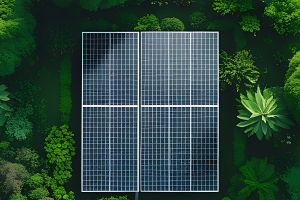Friends, imagine towering cooling towers perched against a rugged coastline, quietly turning seawater into safe, low‑carbon electricity.
In "Atomic Dreams", journalist Rebecca Tuhus‑Dubrow journeys through California’s Diablo Canyon, the last U.S. nuclear plant, to ask a simple question with complex echoes: should atomic energy anchor the nation’s power future?
History
The story begins in 1942 with the first controlled nuclear chain reaction. Enthusiasm for limitless energy mingled with growing unease over safety. Over decades, design improvements and stricter regulations forged a robust safety culture—yet public anxiety persisted, fueled by vivid memories of Three Mile Island and Chernobyl’s radioactive fallout.
Diablo Canyon
Perched on craggy cliffs overlooking the Pacific, Diablo Canyon opened in the mid‑1980s. Site selection sparked fierce debate among coastal residents and environmental experts wary of seismic hazards. Today, screening for explosives and radiation greets every visitor, and slogans like “Safety Is No Accident” underscore rigorous protocols inside the plant.
Safety Culture
Operators at Diablo Canyon adhere to multi‑layered defense systems: redundant cooling pumps, seismic‑rated structures and real‑time sensor networks. Radiation doses are tracked in microsieverts, never exceeding 1 percent of annual background levels. Regular emergency drills, independent oversight and transparent reporting bolster public trust in this high‑stakes environment.
Zero Emissions
One of nuclear energy’s strongest arguments is its climate credentials. Unlike coal or gas, reactors emit virtually zero greenhouse gases during operation. Diablo Canyon alone prevents the release of roughly 16 million metric tons of CO₂ annually—equivalent to taking over 3 million cars off the road each year.
Land Efficiency
Compared to solar farms stretching acres of desert and wind turbines dotting hilltops, nuclear plants have a compact footprint. Diablo Canyon’s 12 acres of reactor buildings generate as much electricity as thousands of acres of solar panels. For densely populated regions, this land efficiency offers a powerful advantage.
As the World Nuclear Association explains, nuclear power’s huge energy output comes with a relatively small land requirement, making it far more land‑efficient than solar or wind. An OECD analysis backs this up, pointing out that even a multi-gigawatt nuclear plant only needs a few hundred hectares — far less than the land needed for the same capacity in renewable farms.
Steady Power
Solar and wind depend on weather—sunlight wanes at dusk, and winds can calm without warning. Nuclear reactors run continuously at over 90 percent capacity, delivering reliable baseload power. This consistency stabilizes the grid and reduces reliance on fossil‑fuel peaker plants during demand spikes.
High Costs
Yet nuclear construction demands colossal upfront capital. Building Diablo Canyon cost billions over a decade, with delays driven by regulatory hurdles and design alterations. Recent U.S. projects have faced even steeper price tags. Critics warn that these ballooning costs could outpace investments in rapidly deployable renewables.
Accident Risk
Catastrophic failures remain a specter. Chernobyl’s design flaws and operator errors triggered a reactor meltdown in 1986. Fukushima’s coastal station suffered a tsunami‑induced cooling‑system failure in 2011. Although modern reactors feature passive safety systems, the risk—however small—carries high stakes for nearby communities.
Security Threats
Enriched uranium fuel poses proliferation concerns. Stringent international safeguards and onsite security measures mitigate these risks, but geopolitical tensions heighten vigilance around nuclear materials management.
Waste Storage
Perhaps the thorniest issue is spent fuel. After 40 years in a reactor, fuel assemblies remain radioactive for millennia. Diablo Canyon currently stores waste onsite in dry casks designed to withstand earthquakes. Without a permanent U.S. repository, thousands of metric tons of spent fuel linger at plant sites nationwide.
Innovation Role
Next‑generation designs—small modular reactors (SMRs) and advanced molten‑salt systems—promise lower costs, enhanced safety and reduced waste. Research hubs and demonstration projects aim to validate these technologies by the decade’s end. If successful, they could reshape the economics and public perception of nuclear.
Evaluation Steps
Readers can weigh nuclear energy’s merits through five steps:
1. Analyze Emissions: Compare lifecycle CO₂ outputs against renewables and fossil fuels.
2. Assess Footprint: Measure land use per megawatt‑hour for each energy source.
3. Review Safety Data: Examine historical incident rates and modern design improvements.
4. Examine Costs: Calculate levelized cost of electricity, including construction, operation and decommissioning.
5. Plan Waste: Investigate current storage practices and future repository proposals.
Conclusion
Friends, "Atomic Dreams" illustrates that nuclear power sits at the nexus of climate ambition, safety engineering and policy debate. As electricity demand surges, the question shifts from “Is nuclear good?” to “How should nuclear fit into a balanced energy portfolio?” Share this exploration to spark informed conversations—and chart your own path through the atom’s promise and pitfalls.


